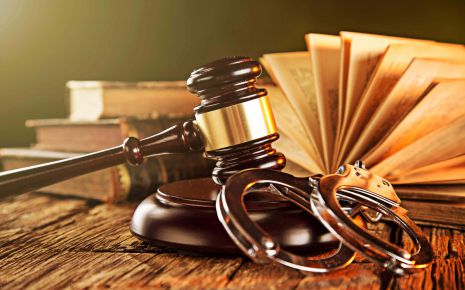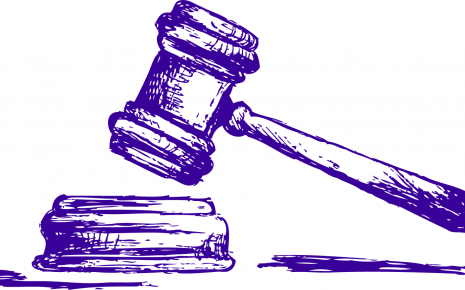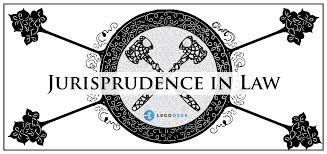26th January 2021 Farmers Violence: Protest Or A Riot
On 26th of January 2021, when the whole nation was celebrating the 72nd Republic
Day displaying its military might, showcasing the strength and ability of
India's Defence Forces, all mighty hunters : Rafale fighter jets and cultural
heritage at Rajpath, not one a few kilometres away what was to be a peaceful
protest of farmers turned into a riot.
All hell broke loose. The riot was led by farmers of Punjab and Haryana region in an ongoing protest against the three farms act which was passed by the parliament of India in September of 2020, the protest has been going on since. The farmers of Punjab and Haryana has been showing their disapproval on the new farmers acts by protesting. After failing to get the support from the state government, the farmers decided to build a pressure on the central government by marching to Delhi and protesting there
A peaceful protest with a few clashes every now and then were maintained until the republic day of 2021. On the 26th of January 2021 tens of thousands of farmers drove a convoy to the Red Fort, when stopped by police they resorted to violence, vandalism, damage to public property, damage to the national monument and what not.
The aftermath of this incident saw many different reaction from public not only within the country but all around the world.
After the riot it was seen very clearly that the farmers misused their Right to Protest given as a fundamental right under Article 19 of the Indian Constitution. The reaction of the public was mixed, while some condemned the riot while others called it a protest.
This project states the definition of a true protest and was the incident that happened on the 26th of January was a protest or a riot.
The research work is based on the data collected by the secondary sources such as books, article, newspapers, journals, etc. The collection of data has been analysed through suitable techniques at different places.
Timeline
On 17th of September 2020, the Three Farm Acts namely, (1) Farmers' Produce Trade and Commerce (Promotion and Facilitation) Act 2020, (2) Farmers (Empower and Protection) Agreement on Price Assurance and Farm Services Act 2020, and (3) Essential Commodities (Amendment) Act 2020 was passed by the Parliament of India.
By the first week of November, many farmers around near the Punjab and Haryana region showed their dissatisfaction and anger against the Farm Bills by burning their fields.
26th January 2021 Riot
On 26th January 2021, a riot and a violent attack broke out by the protesters of the farm bills. The protest had started 4 months prior to the republic day. The farmers had marched all the way from Punjab and Haryana to Delhi to protest but were stopped by the Police and Security forces who kept them out of the boarders of Delhi which halted their movements. Several talks between the higher ups and the farmers failed to reach any conclusion. Finally, the farmers decided to take out a rally on the 26th of January 2021. The authorities after several disagreements finally agreed to let the farmers launch their rallies but on a fixed rout decided by the government and after the parade on Rajpath gets over.
But on the day of the rally many protesters broke the protocol and drove their long convoy of tractors on the routs that were not authorized by the authorities, this resulted in a clash between the protesters and the police / security personals. A large group of protesters also reached the Red Fort and started rioting there, this group was in tens of thousands, most of them were armed with Swords, Kirpans, Fursas, etc. They destroyed the police barricade, intervened the Red Fort, climbed up the domes of the fort and hoisted their religious flag.
The day's incident resulted in a number of casualties in both the corners. Around 400 men were injured, and 30 police vehicles were destroyed, while a large number of rioters were also injured with 1 dead in a tractor accident,. The rioters also caused damage to the Red Fort and facilities inside the fort. The internet services in Delhi were also shut down after the riot.
Khalistani elements were also involved in the riots, with one false claim that Khalistani flag were hoisted on the Red Fort. Reports also suggested that some groups of the farmers were funded by the Khalistani terrorist organisation, they were told to hoist the Khalistani flag on the Red Fort in exchange of reward money. Reports of seeing Khalistani flags with their supporters raising the Khalistani slogans were also seen. Indian intelligence agencies including RAW, and NIA had also confirmed the involvement of Khalistani elements.
Khalistani terror group SFJ accepted their hands behind the riot in Red Fort, they also confirmed that they rewarded $25,000 USD to the supporters to hoist the Khalistani flag on Red Fort. Indian Intelligence also confirmed that Pakistan's ISI paid 5 Crores to Khalistani terror group ' Babbar Khalsa', RAW had tracked down the money transfers from UK, Germany, and Canada. £ 200,000 were tracked to be funded from Italy by a different Khalistani terror group.
The right to protest is a fundamental rights which comes under of the Indian constitution. The right to peacefully protest or to assemble peacefully without arm is protected under Article 19(1)(a), 19(1)(b), of the Indian constitution.
As per the Articles:
Peaceful protest is a fundamental right and the lifeline of democracy, without which there would be a low accountability left with the ruling government and every citizen has to wait for the next election to show out their anger against it. But reasonable restrictions are also important so that peaceful protest do not turn into a violent riot. It should not be made an excuse to supress every form of protest as it is the primary duty of every government to protect the ideals of the constitution.
Restrictions
The right to protest is not an absolute right and also subjected to be reasonably restricted. The right to protest can be restricted by a number of factors. Reasonable restrictions are itself mentioned in the Article 19(2) and Article 19(3) Part III of the Constitution of India.
A protest can be restricted in the following grounds:
The grounds of restrictions that are based on public violation of public order can only be reasonable when there is a proof that the protesters will incite lawless or disorderly acts and that such actions are very likely to occur.
The restrictions or limitations of the right to protest are also stated on the Section 144 of the CrPC ( Criminal Procedure Code ). It empowers the Executive Magistrate of any state or territory to issue an order to prohibit the assembly of four or more than four people in an area. It prohibits public gathering on that area where it is imposed. The people found to be doing this can be booked for engaging in rioting.
Section 144 is imposed only in urgent cases of nuisance or an apprehended danger of some event that has the potential to cause danger, trouble or damage to human life or property. It also restricts from carrying any sort of weapon in the area where the act has been imposed. Anyone found breaking this law can face up to 3 years of punishment.
Rioting under criminal law is defined as a violence offence against public order involving three or more people. Section 146 of the Indian Penal Code, 1860, defines rioting as "whenever force or violence is used by an unlawful assembly, or by any member therefore, in prosecution of the common object of such assembly, every number of such assembly is guilty of the offence of rioting."[4]
Conclusion
After examining all the facts and figures it is concluded that the violent incident that happened on the 26th of January 2021 was an unfortunate and a tragic riot.. As per Article 19 of the Constitution of India there were several elements that does not qualify as a protest,the use of violence, loss of life, clashes with the police and security forces, protester using weapons like swords, kirpans, fursas, etc, are some of the elements that made it distinguish from a protest.
Right to Protest is a right on which a democratic country thrives, the protesters clearly misused this right, the acts done by them qualifies as a riot. There is no such thing as a peaceful protest, a protest has to be peaceful, and the protesters will have to assemble peacefully in order to get their action qualify as a protest.
References
Acts & Reports
All hell broke loose. The riot was led by farmers of Punjab and Haryana region in an ongoing protest against the three farms act which was passed by the parliament of India in September of 2020, the protest has been going on since. The farmers of Punjab and Haryana has been showing their disapproval on the new farmers acts by protesting. After failing to get the support from the state government, the farmers decided to build a pressure on the central government by marching to Delhi and protesting there
A peaceful protest with a few clashes every now and then were maintained until the republic day of 2021. On the 26th of January 2021 tens of thousands of farmers drove a convoy to the Red Fort, when stopped by police they resorted to violence, vandalism, damage to public property, damage to the national monument and what not.
The aftermath of this incident saw many different reaction from public not only within the country but all around the world.
After the riot it was seen very clearly that the farmers misused their Right to Protest given as a fundamental right under Article 19 of the Indian Constitution. The reaction of the public was mixed, while some condemned the riot while others called it a protest.
This project states the definition of a true protest and was the incident that happened on the 26th of January was a protest or a riot.
The research work is based on the data collected by the secondary sources such as books, article, newspapers, journals, etc. The collection of data has been analysed through suitable techniques at different places.
Timeline
On 17th of September 2020, the Three Farm Acts namely, (1) Farmers' Produce Trade and Commerce (Promotion and Facilitation) Act 2020, (2) Farmers (Empower and Protection) Agreement on Price Assurance and Farm Services Act 2020, and (3) Essential Commodities (Amendment) Act 2020 was passed by the Parliament of India.
By the first week of November, many farmers around near the Punjab and Haryana region showed their dissatisfaction and anger against the Farm Bills by burning their fields.
- By the last week of November, protesters began their march towards Delhi (the country's capital). On the Delhi borders they were stopped by a large group of Police force who used tear gas, water cannons and physical force to keep them from entering Delhi. This was the part of "Dilli Chalo" campaign.
- On the 27th of November 2020, the farmer protesters were granted peaceful access to Delhi by the government.
- On the 1st of December 2020, government officials from the ruling party had a talk with the protesters and their leaders. Although both sides reached no conclusion, both the sides agreed that the talk has been "good."
- From the first week of December 2020 to the third week of January 2020, everything was peaceful, other than a few clashes, strikes, solidarity protests, and the works every now and then.
- On 2nd January 2021, Samyukt Kisan Morcha (SKM) leaders announced that if their core demand of the abolition of the Farms law is not met by the 26th of January 2021, they would hold a "Farmers Republic Day Parade."
- On 23rd January 2021, Delhi Police accorded permission to the rally with several conditions; the kisan rally will start after the end of the parade on Rajpath, and the farmers will follow a route that was decided by the police.
- On 26th January 2021, tens of thousands of farmers drove their convoy carrying lethal weapons like swords to routes and places that were accorded by the Delhi Police. This rally turned into a violent protest or a riot as the protesters drove through the barricades and reports with clashes with police were also seen. The group of protesters that reached the Red Fort hoisted the religious flag from the ramparts and invaded and damaged the national monument. After the riots, casualties on both sides were reported.
26th January 2021 Riot
On 26th January 2021, a riot and a violent attack broke out by the protesters of the farm bills. The protest had started 4 months prior to the republic day. The farmers had marched all the way from Punjab and Haryana to Delhi to protest but were stopped by the Police and Security forces who kept them out of the boarders of Delhi which halted their movements. Several talks between the higher ups and the farmers failed to reach any conclusion. Finally, the farmers decided to take out a rally on the 26th of January 2021. The authorities after several disagreements finally agreed to let the farmers launch their rallies but on a fixed rout decided by the government and after the parade on Rajpath gets over.
But on the day of the rally many protesters broke the protocol and drove their long convoy of tractors on the routs that were not authorized by the authorities, this resulted in a clash between the protesters and the police / security personals. A large group of protesters also reached the Red Fort and started rioting there, this group was in tens of thousands, most of them were armed with Swords, Kirpans, Fursas, etc. They destroyed the police barricade, intervened the Red Fort, climbed up the domes of the fort and hoisted their religious flag.
The day's incident resulted in a number of casualties in both the corners. Around 400 men were injured, and 30 police vehicles were destroyed, while a large number of rioters were also injured with 1 dead in a tractor accident,. The rioters also caused damage to the Red Fort and facilities inside the fort. The internet services in Delhi were also shut down after the riot.
Khalistani elements were also involved in the riots, with one false claim that Khalistani flag were hoisted on the Red Fort. Reports also suggested that some groups of the farmers were funded by the Khalistani terrorist organisation, they were told to hoist the Khalistani flag on the Red Fort in exchange of reward money. Reports of seeing Khalistani flags with their supporters raising the Khalistani slogans were also seen. Indian intelligence agencies including RAW, and NIA had also confirmed the involvement of Khalistani elements.
Khalistani terror group SFJ accepted their hands behind the riot in Red Fort, they also confirmed that they rewarded $25,000 USD to the supporters to hoist the Khalistani flag on Red Fort. Indian Intelligence also confirmed that Pakistan's ISI paid 5 Crores to Khalistani terror group ' Babbar Khalsa', RAW had tracked down the money transfers from UK, Germany, and Canada. £ 200,000 were tracked to be funded from Italy by a different Khalistani terror group.
Right To Protest
Public Protests are the walls on which a democratic country thrives, as it allows the voices of the common man to be heard by those in power, in fact India got independence because of a series of protests and demonstrations against the British Rule.The right to protest is a fundamental rights which comes under of the Indian constitution. The right to peacefully protest or to assemble peacefully without arm is protected under Article 19(1)(a), 19(1)(b), of the Indian constitution.
As per the Articles:
- All citizens shall have the right to freedom of speech and expression, with this right is subject to reasonable restriction imposed on the expression of this right for certain purpose under Article 19(2).[1]
- All citizens shall have the right to assemble peaceably without arms, with this right is subjected to reasonable restriction imposed on the expression of this right for certain purpose under Article 19(2)[2].
- All citizens shall have the right to form associations or unions (or co-operative societies), with this right is subjected to reasonable restriction imposed on the expression of this right for certain purpose under Article 19(2)[3].
Peaceful protest is a fundamental right and the lifeline of democracy, without which there would be a low accountability left with the ruling government and every citizen has to wait for the next election to show out their anger against it. But reasonable restrictions are also important so that peaceful protest do not turn into a violent riot. It should not be made an excuse to supress every form of protest as it is the primary duty of every government to protect the ideals of the constitution.
Restrictions
The right to protest is not an absolute right and also subjected to be reasonably restricted. The right to protest can be restricted by a number of factors. Reasonable restrictions are itself mentioned in the Article 19(2) and Article 19(3) Part III of the Constitution of India.
A protest can be restricted in the following grounds:
- In the interest of the sovereignty & integrity of India
- The security of the state
- Friendly relation with the foreign state
- Violation of Public order
- Decency or morality or in relation to contempt of court, defamation, or incitement of an offence
The grounds of restrictions that are based on public violation of public order can only be reasonable when there is a proof that the protesters will incite lawless or disorderly acts and that such actions are very likely to occur.
The restrictions or limitations of the right to protest are also stated on the Section 144 of the CrPC ( Criminal Procedure Code ). It empowers the Executive Magistrate of any state or territory to issue an order to prohibit the assembly of four or more than four people in an area. It prohibits public gathering on that area where it is imposed. The people found to be doing this can be booked for engaging in rioting.
Section 144 is imposed only in urgent cases of nuisance or an apprehended danger of some event that has the potential to cause danger, trouble or damage to human life or property. It also restricts from carrying any sort of weapon in the area where the act has been imposed. Anyone found breaking this law can face up to 3 years of punishment.
Riot
India has had a very long history of riots. Right from the independence of the nation in 1947 till today, the nation has seen many unfortunate riots like the one that happened on the republic day of 2021.Rioting under criminal law is defined as a violence offence against public order involving three or more people. Section 146 of the Indian Penal Code, 1860, defines rioting as "whenever force or violence is used by an unlawful assembly, or by any member therefore, in prosecution of the common object of such assembly, every number of such assembly is guilty of the offence of rioting."[4]
Punishment
Rioting is illegal in India. The Section 147 of the Indian Penal Code, 1860 states that " whoever is guilty of rioting, shall be punished with imprisonment of either description for a term which extend to two years, or with fine, or with both."[5]Difference Between A Protest And A Riot
| Protest | Riot |
| A Protest is a peaceful organised public demonstration of disapproval. | A Riot is a public disturbance involving a violent act by a group of people. |
| Protest is a fundamental right in India, It is stated in Article 19 of the Indian Constitution that protesting is every citizens fundamental right. | Rioting is illegal in India, any citizen found taking part in a riot will be punishable by law and can face upto 2 years in prison. |
| Protesters participate in a protest without arms and weapons. | Rioters often use arms and weapons. |
After examining all the facts and figures it is concluded that the violent incident that happened on the 26th of January 2021 was an unfortunate and a tragic riot.. As per Article 19 of the Constitution of India there were several elements that does not qualify as a protest,the use of violence, loss of life, clashes with the police and security forces, protester using weapons like swords, kirpans, fursas, etc, are some of the elements that made it distinguish from a protest.
Right to Protest is a right on which a democratic country thrives, the protesters clearly misused this right, the acts done by them qualifies as a riot. There is no such thing as a peaceful protest, a protest has to be peaceful, and the protesters will have to assemble peacefully in order to get their action qualify as a protest.
References
Acts & Reports
- • The Constitution of India, 1950
- • The Indian Penal Code, 1860
- • The Code of Criminal Procedure, 1974
- See Article 19(1)(a) of The Constitution of India
- See Article 19(1)(b) of The Constitution of India
- See Article 19(1)(c) of The Constitution of India
- See Section 146 of the Indian Penal Code, 1860
- See Section 147 of the Indian Penal Code, 1860
Law Article in India
Legal Question & Answers
Lawyers in India - Search By City
LawArticles
How To File For Mutual Divorce In Delhi

How To File For Mutual Divorce In Delhi Mutual Consent Divorce is the Simplest Way to Obtain a D...
Increased Age For Girls Marriage

It is hoped that the Prohibition of Child Marriage (Amendment) Bill, 2021, which intends to inc...
Facade of Social Media

One may very easily get absorbed in the lives of others as one scrolls through a Facebook news ...
Section 482 CrPc - Quashing Of FIR: Guid...

The Inherent power under Section 482 in The Code Of Criminal Procedure, 1973 (37th Chapter of t...
The Uniform Civil Code (UCC) in India: A...

The Uniform Civil Code (UCC) is a concept that proposes the unification of personal laws across...
Role Of Artificial Intelligence In Legal...

Artificial intelligence (AI) is revolutionizing various sectors of the economy, and the legal i...








Please Drop Your Comments